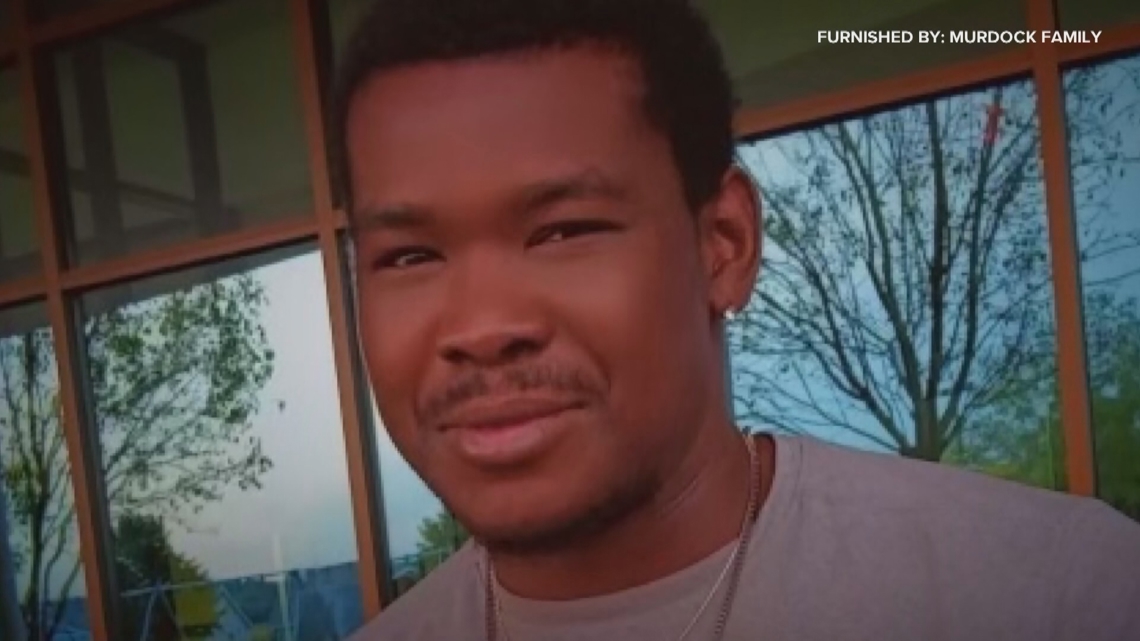Kare11
‘Don’t respond’ | MnDOT warns of E-ZPass text message scam


MnDOT said E-ZPass will never text or email drivers to ask for personal information.
ST PAUL, Minn. — Drivers may hop into the toll express lane to breeze past slower traffic, but don’t be too quick to respond to a growing scam involving allegedly outstanding toll payments.
The Minnesota Department of Transportation is warning people about fraudulent email and text messages claiming to be from the E-ZPass toll payment service. The messages often arrive in the form of a photo with the E-ZPass logo, claiming a “recent journey” incurred a charge that must be settled “promptly to prevent any additional late fees,” with a link.
“Don’t respond,” MnDOT said on the Minnesota E-ZPass website. “You could be duped into giving away sensitive data, including personal identity or credit card information. Minnesota E-ZPass will never text or email you for personal or sensitive information.”
According to MnDOT, E-ZPass does not accept credit card information over text, email, or voicemail. E-ZPass customers are encouraged to interact with their accounts only through the official secure customer portal at ezpassmn.net.
The scam messages are also being sent to drivers who are not E-ZPass customers. MnDOT believes the phone numbers and emails are being chosen randomly. The agency urges people to report fraud activity to the Federal Trade Commission or the FBI.
Similar scams have been reported in recent months across multiple other states that utilize the E-ZPass toll payment system, including Massachusetts, Pennsylvania and New York.
Minnesota converted to the E-ZPass toll payment system in 2021, after initially offering its own MnPASS system. Drivers can use an E-ZPass transponder to pay tolls to travel in marked express lanes during peak travel hours, while also using the same device on toll highways in several other states in the Midwest and East Coast.
Kare11
New book aims to inspire families to engage in voting process


Nationally, Black people are projected to account for 14% of eligible voters in the upcoming election.
ST PAUL, Minn. — A few thousand copies of a new children’s book are now on book store and library shelves nationwide, in time for election season.
Dr. Artika Tyner wrote the book, “Kwame Votes,” which she dedicates to St. Paul’s Rondo community.
The author is also executive director of Planting People Growing Justice, a literary organization now in its eighth year. Tyner has written 35 books over the years and is partnering with Minneapolis-based Lerner Publisher Services to distribute “Kwame Votes” as part of a fall book collection.
The plot starts with Kwame voting in a student government election, and that leads to a larger conversation with his father and grandmother.
“The conversation isn’t about partisanship or a particular candidate,” Tyner told KARE 11 from the organization’s new Writing House in St. Paul. “It’s about the importance of issues that matter to the people that are there.”
By the end of the book, the boy visits an Election Day polling place.
“He stands nearby as grandmother cast her vote,” Tyner said. “He remembers that his mother is serving as an election judge. So he gets to see democracy literally in action.”
Tyner says she hopes the story leads real families to vote.
“‘She proudly placed the ‘I voted’ sticker on Kwame’s sweater,'” she said, reading the final page aloud.
According to Pew Research Center, the number of Black eligible voters has gradually risen over the past 2 decades. The number this November is projected to reach 34.4 million, up 7% from 4 years ago. Black people are also projected to account for 14% of eligible voters in the upcoming election.
“We cannot ignore the fact that there were many impediments of access to the ballot box,” Tyner said. “For instance, could you imagine being asked how many bubbles are in a bar of soap? So when we think about the history, we know that within the African-American community voting is something sacred. Voting is something that we know has to be protected.”
As Tyner does her part, Urban League Twin Cities is focused on getting people registered. President and CEO Marquita Stephens says the organization’s Young Professionals are posting Get Out the Vote content on social media.
She says Urban League is also reaching those newly allowed to vote in Minnesota.
“The Legislature passed a law that allowed ex-felons to vote,” she said. “But I’m concerned about the people that have been off paper for 10 years or 20 years and have curated a habit of not voting, of not feeling part of the democratic process. Reaching those folks and making sure that they know yes, it’s their turn, and we fought long and hard to include them.”
For Tyner, growth in civic engagement is also key.
“That we’ll get involved in the commissions and the boards and volunteerism, philanthropy,” Tyner said. “And in fact, in the back of the book, there are some practical strategies on how young people can get involved.”
Tyner’s fall book collection also includes “Dreams of our Ancestors,” a poem co-written by five Black children and writer Wisdom Mawusi, and “Jaheem’s First Kwanzaa,” a book exploring the importance of honoring cultural roots.
Kare11
Grow with KARE: The wrong tree in the wrong place


EDINA, Minn. — We’re in Belinda’s backyard for this segment. This back corner of her yard is consistently wet, and not just THIS year.
She had a Maple tree planted here, but it did not thrive in the wet conditions and eventually had to be removed. It’s a classic example of the wrong plant in the wrong place.
There are several trees that would love to grow in Bel’s slightly soggy corner. And if you have a spot like this, here are our suggestions.
So what did Belinda choose? Find out next time when we plant it in her yard.
Kare11
SPPD chief highlights crisis of gun violence and access


Court documents show the suspect in the shooting was legally barred from owning a firearm and had been hospitalized during a mental health crisis last year.
MINNEAPOLIS — As the Lowertown neighborhood in Saint Paul mourns the brutal murder of a beloved artist, the top law enforcement official in the city is using the case to highlight the crisis of gun violence both locally and nationally.
Saint Paul Police Chief Axel Henry made the pointed comments at a press conference on Thursday afternoon, after announcing that two of his officers shot and killed the person they suspect of murdering Carrie Kwok a night earlier.
“This murder that took place in our city, which led us to be talking about this officer-involved shooting,” Henry said, “has all kinds of hallmarks and flags that I think are going to come out in the coming days, that we as a state and as a country need to start taking more seriously. We have rules and regulations both on the state and federal level, that talk about what we need to do about who can have guns.”
On Friday afternoon, the BCA identified the man killed by police as 29-year-old Seantrell Murdock.
Police said he had a gun when officers confronted him in Belle Plaine, although it’s not clear whether it was the same gun used in the Lowertown shooting. Court records show that Murdock had a lengthy criminal history dating back to 2013, including a felony burglary conviction that bans him for life from possessing firearms.
Also, court documents from Scott County shed more light into Murdock’s hospitalization last year during a mental health crisis, which led to a petition seeking to have him civilly committed as a “person who poses a risk of harm.” According to those documents, Murdock’s mother brought him to Fairview Riverdale Hospital’s emergency room in January 2023 reporting a diagnosis of Bipolar disorder and use of alcohol, marijuana and opioids.
“Respondent was ‘tripping’ on LSD and having some form of psychotic incident upon admission,” according to the court records. “Respondent became physically and verbally assaultive to staff requiring physical restraints and emergency medications.”
However, after Murdock’s behavior improved and he showed a willingness to take medication, the court issued a stay on his civil commitment, meaning he could be discharged from the hospital as long as he complied with a treatment plan.
Since then, a courts spokesperson confirmed that no petitions had been filed against Murdock under the state’s new red flag law, which allows the courts to remove firearms from a person deemed a threat to themselves or others. But, given his felony conviction, any weapon Murdock obtained would have been illegal anyway.
“I think as this case plays out, we’re going to start to see that this is like many other cases,” Chief Henry said. “I think we as a community have to come together and say, when we hear these warnings, when we see these advanced notices… we as a community have to take that seriously. We have to listen and we have to act.”
Police have not said how Murdock obtained a weapon, given his criminal history and felony restriction on having a firearm.
“That’s where we get into problems across the country,” said Megan Walsh, the director of the Gun Violence Prevention Clinic at the University of Minnesota Law School. “Firearms are too easy to access, too easy to purchase.”
Walsh described Minnesota’s gun laws as “pretty good” and said she was pleased to see the state legislature bolster them over the past few years, including the passage of a red flag or Extreme Risk Protection Order law.
However, she said there is still room for improvement, as evidenced by the Lowertown shooting this week.
“My heart just breaks for this community. It’s just heartbreaking. This is a situation where it could have been prevented. He was known to have difficulties. He was known to be in a period of crisis,” Walsh said. “One of the things I was thinking about while reading about the Lowertown case is that, there are a couple of different elements of when you want to prevent someone from accessing a firearm. Certainly, when a court is trying to make a decision about whether someone should be civilly committed, they should be asking what weapons are accessible to you, identifying where they are, and creating a very specific plan to ensure that individual cannot access them.”
Meanwhile, in Belle Plaine, Seantrell Murdock’s brother said his family is just as shocked about the situation as everyone else.
“It didn’t really make sense. Because I knew what he was doing — pursuing his school, doing his thing, working. I’m like, what the heck is going on?” Rahi Murdock said. “I’m still just kind of processing everything myself. I don’t really know what to say.”




